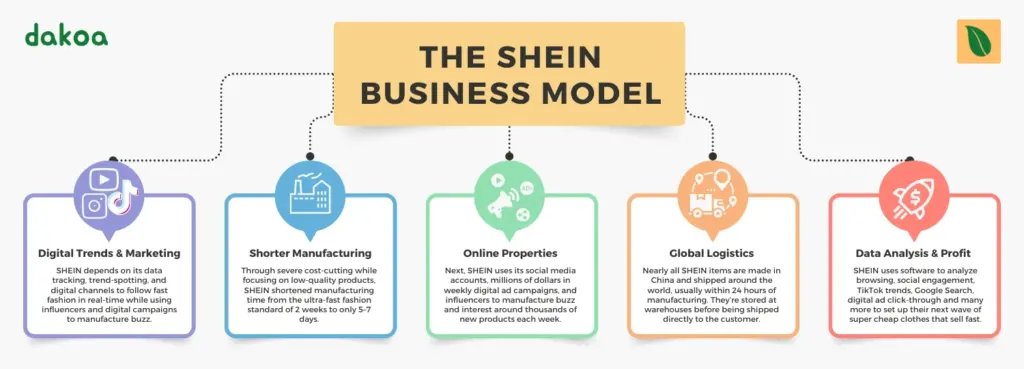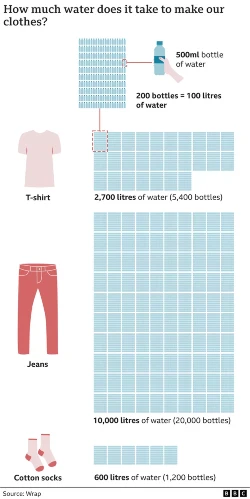The concept of circular fashion, purportedly championed by Shein’s new resale platform, is fundamentally at odds with the company’s business model. While resale might appear as a sustainable move, keeping clothes in circulation and potentially displacing the production of new items, Shein’s approach is a stark contradiction. The fact that Shein’s workers are paid a pittance, as little as 3 cents per hour, as uncovered by a Channel 4 investigation, juxtaposed with the launch of Shein Exchange, paints a picture of stark hypocrisy.
Shein’s Covert Market Research Operation They Hope No One Notices (We Did)
Shein Exchange isn’t an isolated case. Following in the footsteps of other fast-fashion brands like Pretty Little Thing and H&M, Shein’s platform is less about sustainability and more about understanding and manipulating consumer behavior.
It’s a classic example of greenwashing, where a brand projects an eco-friendly image while continuing harmful practices.
The company’s colossal output – adding up to 2,000 new styles daily – is an antithesis to sustainable practices. It becomes evident that the resale initiative isn’t about reducing this overwhelming production, but about using consumer data to fuel more targeted and effective production strategies.

What’s particularly alarming is the transparent cynicism behind Shein’s move. By acknowledging the polluting nature of their clothes, Shein admits to contributing to environmental degradation.
However, this admission doesn’t translate into a commitment to reduce production or improve labor practices. Instead, it’s a calculated move to appear accountable while continuing to pursue profit through overproduction and waste.

The Power of this Consumer Data to Shein
In the realm of fast fashion, consumer data is a goldmine. When a company like Shein launches a resale platform, it’s not just about selling used clothes; it’s an opportunity to collect a wealth of data about customer preferences, trends, and buying behaviors.
Each time a customer interacts with Shein’s platform, they leave digital footprints. These include the styles they browse, the items they purchase, and the products they choose to resell. Analyzing this data helps Shein understand what’s popular among its customer base.
For instance, if a particular style of dress is frequently resold and quickly purchased, it signals a high demand for that style. Shein can then prioritize producing similar items.
Trend Forecasting
The fast-fashion industry thrives on rapidly changing trends, and consumer data is crucial for predicting these shifts. By monitoring which items are resold, how quickly they sell, and the prices they fetch, Shein can gauge which fashion trends are gaining or losing momentum. This insight allows them to stay ahead of the curve, ensuring that their new collections align with emerging trends.
Tailoring Marketing Strategies
Consumer data also plays a pivotal role in shaping marketing strategies. By understanding the preferences and buying patterns of their customers, Shein can tailor its advertising campaigns to be more effective. For example, if data shows that a particular demographic is more inclined to buy bright, floral patterns, Shein can target them with ads featuring similar products, thereby increasing the likelihood of sales.
Pricing Strategies
The resale data can offer valuable insights into how much customers are willing to spend on certain types of clothing. This information is invaluable for setting prices for new items. If consumers are willing to pay higher prices for certain types of clothing on the resale platform, Shein might consider pricing new, similar items at a higher range.
The True Value of Data to Shein
For Shein, consumer data isn’t just valuable; it’s central to their business model. The fast-fashion industry operates on thin margins and high volume. By leveraging detailed consumer data, Shein can make informed decisions on what to produce, in what quantity, and at what price. This targeted approach reduces the risk of unsold inventory, maximizes sales, and keeps the company in line with fast-changing consumer tastes.
In essence, Shein’s foray into the resale market isn’t just a venture into sustainability; it’s a strategic move to gather actionable consumer data. This data becomes a cornerstone for developing strategies that keep the company at the forefront of fast fashion, driving sales and reinforcing its market position.
For the average consumer, understanding this dynamic is crucial. It reveals that every purchase, resale, and interaction with the platform contributes to the data-driven machinery that propels the fast fashion industry forward. And that’s just the impact Shein’s resale platform has on the consumer, but what about the social and environmental impact?
The Environmental and Social Impact Is Far From ‘Green’
The environmental impact of Shein’s practices is profound, and you can read more about their business practices here. The disposable nature of fast fashion, coupled with low-quality manufacturing, means that most of these clothes are destined for landfills.
The social implications are equally dire.
The exploitation of workers, revealed in the harsh working conditions and inadequate compensation, is a glaring issue that Shein’s resale platform does nothing to address.
7 Things You Should Know Before Using Shein Exchange
- You can only resell previous Shein purchases through the Exchange. You must have an existing Shein account with previous purchases in your order history.
- Shein will take 5% of each sale. That may not seem like much (and it isn’t) but Shein clothes are super cheap to begin with, so every little bit adds up. And you can’t dictate the pricing terms. Shein has pricing and pricing maximums built into the platform.
- Shein Exchange is accessible only through their mobile app and your user account on their website. And Shein doesn’t disclose their fee or policies on their Shein Exchange website. You have to use their app to get any real information.
- Even though Shein Exchange is only available with a Shein user account and verified Shein purchases, the company doesn’t provide any protection or guarantees for third-party sellers. In fact, here is Shein’s actual policy:
“We have no control over and do not guarantee the existence, quality, timing, condition, safety, or legality of items offered for sale through the SheIn Exchange, the truth or accuracy of listings; the integrity, responsibility, or any actions of any users; the ability of Sellers to sell Items; the ability of Buyers to pay for Items; that a Buyer and Seller will actually complete a transaction; or that a Buyer will return an Item if a return has been authorized through SheIn Exchange.”
- The buyer pays for shipping, but the seller dictates the terms. The seller can offer “free shipping” by building the price into the item (be careful though because the total price can’t exceed Shein’s cheapest original price on the item), or the buyer pays the shipping fee directly to Shein in a separate payment. Shein’s determines the shipping cost based on weight of the item, usually $3.99 to $19.99.
- You can’t use Shein credits, gift cards, promotional offers, coupons, or points toward Shein Exchange purchases. So any perks you have saved up in your Shein account, are entirely irrelevant when it comes to the Exchange.
- Shein’s clothes are so cheaply made that, on average, they last for just a few wears and washes. Shein’s isn’t just fast-fashion, it’s ultra-fast fashion. If you’re using their exchange to be more eco-friendly, we suggest you use a local marketplace like Facebook Marketplace. Meta charges no fees or percentage and the buyer is typically local, saving the environmental impact associated with shipping logistics.
In conclusion, Shein’s resale platform is a far cry from a sustainable initiative. It’s a wolf in sheep’s clothing – an attempt to greenwash the brand’s image and gather consumer data under the guise of promoting circular fashion.
More To Discover
- Fast Fashion’s Dirty Secrets: 5 Greenwashed Myths That Are Far From Pretty
- Keurig Introduces Compostable Coffee Pucks To Fix The K-Cup Waste Problem They Started
- Fleece Fashion’s Real Cost: How The Cozy Clothes Contribute to Microplastic Pollution
- Seoul Government Uncovers High Levels of Toxic Chemicals in Shein Products
The real solution lies in fundamental changes to the fast-fashion business model, prioritizing sustainable production, ethical labor practices, and genuinely eco-friendly initiatives.
As consumers, it’s our responsibility to see through these superficial measures and demand real, tangible change from the industry.





















